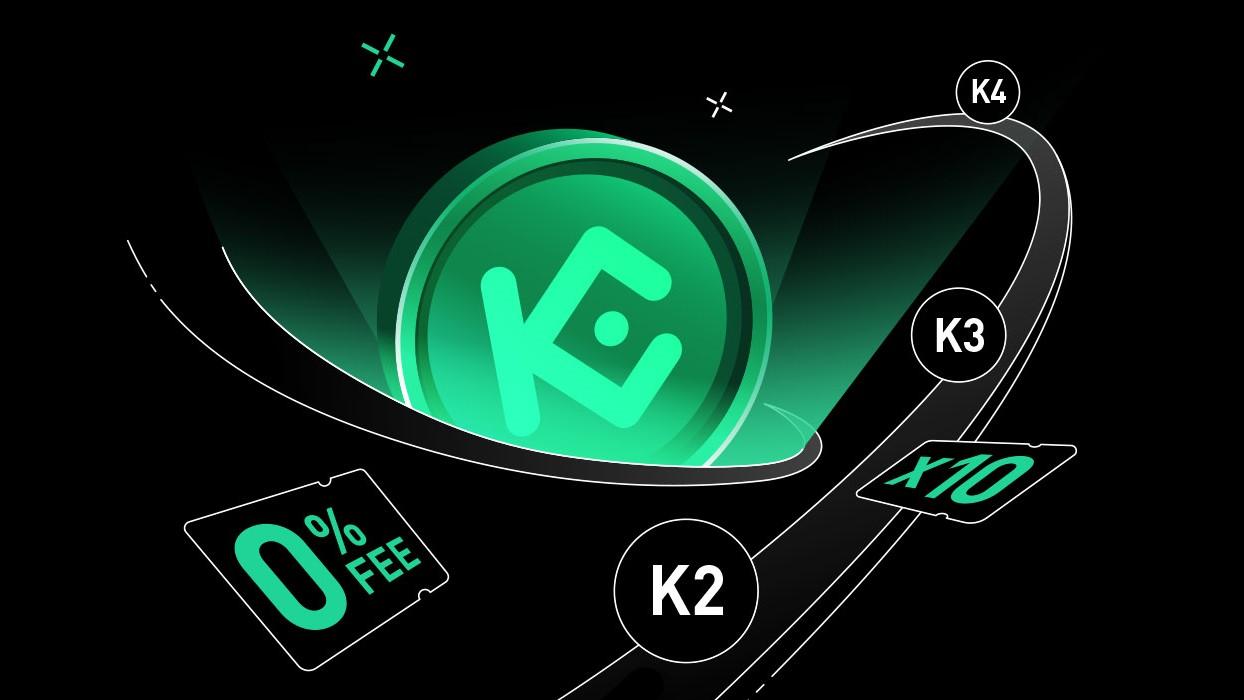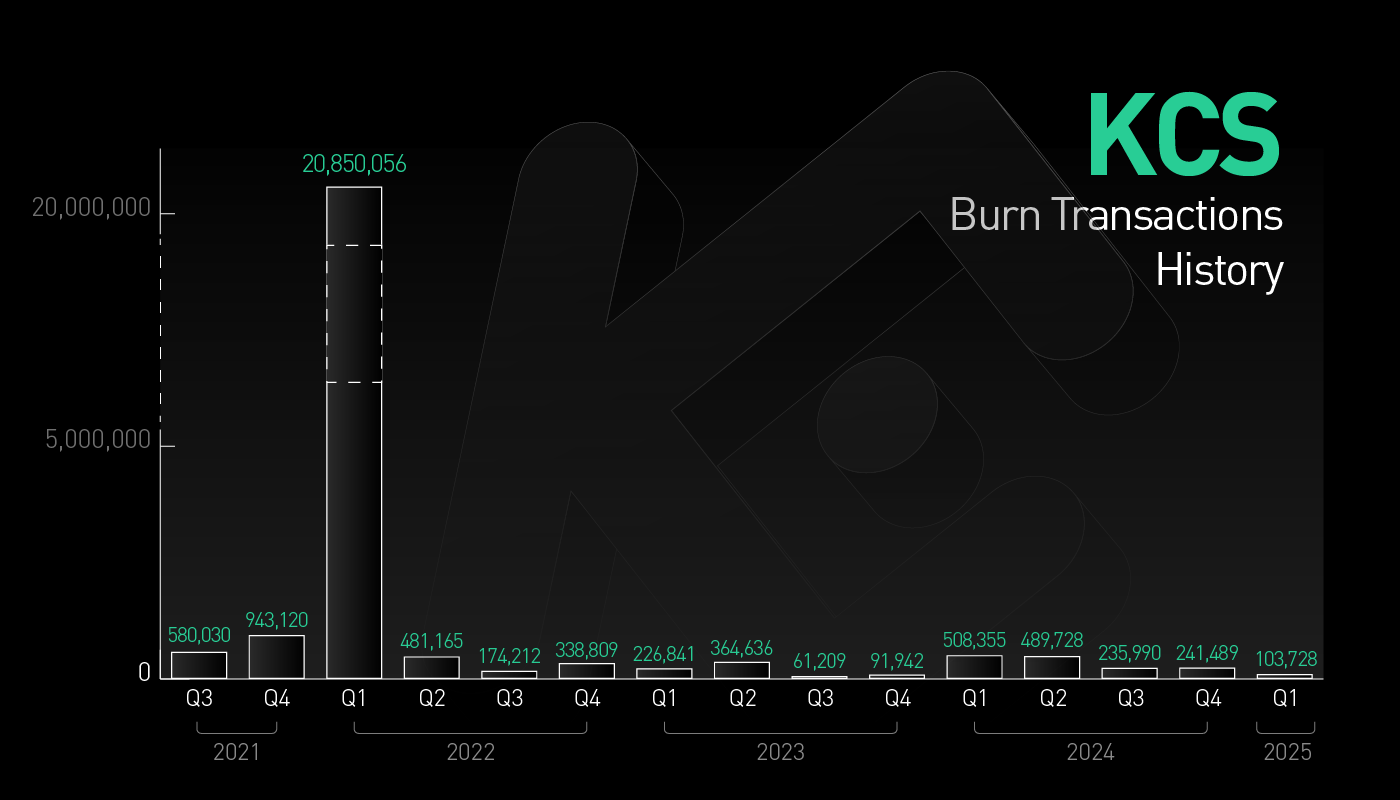You can participate by staking 1 KCS. How does KuCoin use the "KCS Loyalty Level Program" to leverage new momentum for the platform?

Author: Weilin, PANews
In the crypto world, the role of exchange tokens is continuously evolving. From the initial “fee deduction tool” to the core asset of the ecosystem today. The value of exchange tokens not only reflects the strength and vision of crypto exchanges, but also becomes a bridge for user participation, ecosystem construction and revenue sharing.
As the native token of KuCoin Exchange, KCS has played a key role in the ecological evolution since its launch in 2017. Users can use KCS to pay transaction fees, earn incentives, and obtain exclusive rewards. It was originally issued based on Ethereum (ERC-20 standard), and then migrated to KuCoin Community Chain KCC to support more scalability needs.
As the number of KuCoin users worldwide exceeds 38 million, the platform is accelerating the construction of a new generation of crypto-financial ecosystem. The KCS loyalty level program launched in March 2025 is an important part of KuCoin's launch of the user incentive system 2.0 - making KCS no longer just a platform currency, but a pass to the future financial world.
KCS Loyalty Level Program: Four Levels to Improve User Engagement and Asset Activity

The KCS Loyalty Level Program has four levels: K1 Explorer, K2 Voyager, K3 Navigator and K4 Pioneer. The levels are divided according to the user's KCS staked amount and its proportion of total assets. The design concept takes into account both "low threshold" and "high incentive": users only need to invest 1 KCS to participate and unlock exclusive rights and interests that increase step by step.
The main incentives and benefits of the KCS Loyalty Level Program include:
- Staking income bonus : The higher the holding level, the higher the annualized income ratio, which effectively improves the compound interest potential of assets.
- Additional returns from financial products : When participating in fixed-income products such as USDT, BTC, and ETH, you can enjoy level-specific income bonuses.
- GemPool IPO multiples increased : GemPool allows users to stake crypto assets to obtain token airdrops. By staking KCS, USDT and other tokens, new coins can be obtained at no additional cost. During the event, users can stake KCS, USDT or other tokens listed on the GemPool page. If eligible, the airdrop token rewards will be deposited into the user's trading account after the staking period, and users can also claim the accumulated airdrop token rewards according to the prompts on the event page. Now, users who participate in the loyalty tier program and participate in the GemPool KCS pool can get the GemPool multiple bonus to increase potential returns.
- Comprehensive platform benefits : including KuCard payment rebates, KCS deduction of transaction fees, withdrawal fee refunds, interest-free quota for new KA users, etc. At the same time, KuCoin is planning to add support for KCS staking in its Spotlight platform, allowing users to directly participate in project subscriptions through staking.

As the KCS loyalty tier program goes online, KuCoin has officially launched a site-wide welfare frenzy, preparing three gifts for KCS supporters: Exclusive airdrops for KCS holders - rewards loyal users, rewards will soon be airdropped into accounts. New user subscription challenge - race to subscribe, sprint to the top of the list, and win exclusive KCS rewards. "Pioneers" exclusive bonus - become a pioneer member and unlock high-level rewards.
It can be said that through these activities, KuCoin has made positive explorations to enhance the capabilities of KCS and bring more practical benefits to users.
KCS destruction mechanism: Continuously optimize circulation and promote value growth

Token burning is a common token economic model, similar to buybacks in the stock market, which means that its total supply will gradually decrease over time through the token destruction process, and the reduction in circulation also promotes the scarcity of tokens. KCS also implements a deflationary model, where KuCoin uses a portion of its net profit to buy back KCS and then destroys the tokens to permanently remove them from circulation. The goal is to reduce the total supply from the initial 200 million tokens to 100 million tokens. This scarcity may help drive the value of the token over time.
In March 2025, the KCS team completed the 57th KCS destruction, burning a total of 17,836 KCS, worth approximately $218,074. In the past year, a total of more than 1.0888 million KCS were destroyed, worth approximately $10.867 million, demonstrating the platform's determination to continuously optimize the token structure.
From chains, payments to Web3 ecosystems, KCS is moving towards a dual identity of "platform currency + equity certificate". At the same time, KuCoin adheres to the compliance route to provide more users around the world with a safe and innovative trading experience KCS. KuCoin has a bright future. With the vision of "from geeks to mass adoption" as its core, KCS promotes an innovative economic model through three strategic pillars:
First, we will strengthen the KCC ecosystem.
KCC 1.0 was officially launched on June 16, 2021. It is an EVM-compatible blockchain that supports DeFi, games, and Web3.0 applications, with millions of blocks and a growing number of users.
KCC 2.0 upgrades internal subroutines to improve performance, scalability, and Gas limits (up to 500 million per block) while maintaining EVM compatibility.
KCC 3.0 evolves into a cross-chain ecosystem, adding low-cost Layer 2 and multi-functional SDK, providing efficient cross-chain transfer functions, and expanding the scope of DeFi and game applications.
The second strategic pillar is to establish a comprehensive payment system. KCS is participating in the construction of a payment system throughout the KuCoin ecosystem, including transactions, lending, NFT and offline payment access, lowering the threshold for global digital asset payments and forming a connection with the external chain ecosystem.
The third strategy is to lead the evolution of the Web3.0 ecosystem. KCS advocates a decentralized, user-driven Internet, which is achieved through:
- Decentralized Identity: Secure and private decentralized identity (DID).
- NFT Management: Simplified ownership and trading protocols.
- Metaverse platform: Supports social, gaming and virtual work environments.
- Developer Support: Provide funding and build a vibrant community with a dedicated Web3.0 incubation fund.
Driven by the continuous expansion of the platform ecosystem and the steady growth of the user base, the long-term potential of KCS is being released at an accelerated pace. KuCoin has comprehensively improved the participation and long-term holding motivation of KCS holders through the loyalty level program, further stimulating the vitality of the platform ecosystem. With the quarterly repurchase and destruction mechanism, the circulation of KCS continues to be optimized, and the supply and demand relationship tends to be balanced, laying a solid foundation for the mid- and long-term value growth.
Looking to the future, KuCoin will continue to adhere to the strategic direction of globalization and compliance, deepen local markets, embrace supervision, and provide global users with a more secure, transparent, and innovative trading experience. With the continuous expansion of product lines such as KuCard, Earn, and Launchpad, the use scenarios of KCS will continue to expand, becoming a key link between the exchange ecosystem and user rights.
With a more relaxed regulatory environment and policy support, the crypto market will have more development opportunities in the future. The launch of the KCS loyalty level program is an initiative of KuCoin to optimize the user incentive mechanism, and also reflects its direction of promoting global compliance and enhancing the platform's ability to release value. In this context, KCS may have greater development potential and opportunities through continued efforts in the future.
You May Also Like

Pakistan Considers Digital Rupee to Tap $25B Crypto Growth
Highlights: Pakistan is considering a digital rupee and CBDC to cut remittance costs. The crypto market in Pakistan could unlock $25B in new economic growth. The CBDC pilot phase is in development with World Bank and IMF support. Pakistan is moving forward with plans to integrate blockchain technology into its financial system. The nation is considering introducing a rupee-backed stablecoin and central bank digital currency (CBDC). The objectives of these efforts are to reduce remittance costs, modernize access to finances, and promote economic growth. At the Sustainable Development Policy Institute (SDPI) Conference, leading financial authorities outlined the massive growth potential of crypto. They estimate Pakistanis holding up to $30 billion in crypto holdings. The annual crypto trading might soon reach $300 billion, which is nearly equivalent to the total GDP of the country. Zafar Masud, the president of the Pakistan Banks Association, pointed out the booming global stablecoin market. According to him, the nation is capable of exploiting $20-25 billion in the adoption of digital assets. He confirmed that Pakistan is “actively exploring a rupee-backed stablecoin” to increase access and efficiency. A digital rupee would enhance secure cross-border payment and financial inclusion. More than 100 million Pakistani adults are still unbanked, and the innovation is a pressing case. Pakistan Considers Rupee-Backed Stablecoin Amid $25B Loss Warnings Pakistani regulators are actively exploring the development of a sovereign-backed digital currency amid growing recognition of the transformative potential of cryptocurrencies and bloc…https://t.co/CVr2s8UeoU pic.twitter.com/Fma8WTIGP3 — Crypto Breaking News (@CryptoBreakNews) November 8, 2025 CBDC Prototype Underway The State Bank of Pakistan is proceeding with the development of its digital currency. Faisal Mazhar, the Deputy Director of Payments, revealed that a prototype of CBDC is underway. Additionally, the World Bank and International Monetary Fund are assisting this initiative. He further added that there would be a pilot phase before the full rollout of the currency. The CBDC is expected to make remittances cheaper and financial services more accessible across the country. According to the global specialist Yara Wu, such technology would make remittances faster, secure, and cheaper. Sajid Amin of SDPI emphasized the necessity of having proper regulation. He noted the relevance of cybersecurity, digital literacy, and risk management to safeguard consumers and investors. Fintech Innovation Fuels Growth The fintech industry in Pakistan is also on the rise. ZAR, a start-up that provides dollar-backed stablecoins, recently raised $12.9 million. Top investors, such as Andreessen Horowitz, Coinbase Ventures, and Dragonfly Capital, were the source of funding. ZAR has raised $12.9 million to bring ROCK. SOLID. DOLLARS. to the Global South Led by @a16zcrypto, with @dragonfly_xyz, @vaneck_us, @cbVentures, and Endeavor Catalyst. pic.twitter.com/0DKOlWMwSO — ZAR (@zardotapp) October 28, 2025 ZAR is dedicated to making stablecoins accessible to underserved populations in Pakistan. Their mission focuses on bridging the financial gap in emerging markets. Moreover, the firm is seeking to assist millions of people who have yet to access traditional banking services. In addition, this move matches government-led digital finance initiatives. The increased adoption is a positive sign of increasing cryptocurrency interest in Pakistan. Pakistan moved to the third position globally in the 2025 Global Crypto Adoption Index by Chainalysis. To build further on this momentum, Pakistan established a regulatory framework regarding virtual asset services. Licensing and supervision are being managed by the Pakistan Virtual Asset Regulatory Authority (PVARA). Firms have to comply with stringent compliance criteria under the Virtual Assets Ordinance 2025. These include the anti-money laundering (AML), know-your-customer (KYC), and counter-terrorism financing measures. This goal is to create a regulated, safe digital economy. Furthermore, PVARA also encouraged international crypto exchanges and service providers to apply for licenses in September. eToro Platform Best Crypto Exchange Over 90 top cryptos to trade Regulated by top-tier entities User-friendly trading app 30+ million users 9.9 Visit eToro eToro is a multi-asset investment platform. The value of your investments may go up or down. Your capital is at risk. Don’t invest unless you’re prepared to lose all the money you invest. This is a high-risk investment, and you should not expect to be protected if something goes wrong.

1confirmation founder: A Silicon Valley VC who has been trying to control the crypto industry but has not succeeded.
